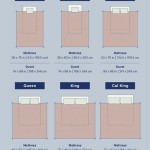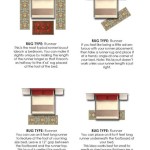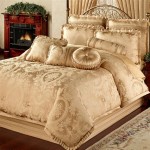How Long Can Bed Bugs Live In A Mattress Cover?
Discovering bed bugs in one's home can be a distressing experience. These tiny, nocturnal insects feed on human blood and are notorious for their ability to infest mattresses and other furniture. Mattress covers, specifically designed to encase mattresses and box springs, play a crucial role in bed bug control. Understanding how these covers impact bed bug survival is essential in effectively eliminating these pests.
Key Factors Affecting Bed Bug Survival Inside Mattress Covers
Several factors influence how long bed bugs can survive inside a mattress cover. These include the type of cover used, the presence of any rips or tears, the temperature and humidity levels inside the cover, and the availability of a host (i.e., a human blood meal). It is important to consider these factors when assessing the effectiveness of a mattress cover as a bed bug control strategy.
Types of Mattress Covers
Mattress covers broadly fall into two categories: preventative covers and encasement covers. Preventative covers are typically thinner and designed to protect against spills and allergens. While they may offer some protection against bed bugs, they are not specifically designed for eradication. Encasement covers, on the other hand, are thicker, completely sealed, and specifically designed to trap existing bed bugs inside and prevent new ones from entering. They are the recommended type for addressing bed bug infestations.
Impact of Cover Integrity
Even the highest quality encasement cover will be ineffective if it has rips, tears, or openings. Bed bugs are incredibly small and can exploit even the tiniest of gaps to enter or escape. It's crucial to inspect covers regularly for any damage and replace them immediately if any flaws are found. Zippers should be fully functional and tightly closed at all times.
The Role of Temperature and Humidity
Temperature and humidity levels inside the mattress cover significantly impact bed bug survival. High temperatures are lethal to bed bugs. While room temperature conditions may not kill them quickly, placing encased mattresses in direct sunlight or using specialized heating equipment can significantly reduce their lifespan inside the cover. Low humidity can also dehydrate and kill bed bugs, making dry environments less hospitable for them.
Starvation and the Absence of a Host
Bed bugs are resilient and can survive for surprisingly long periods without feeding. While the exact timeframe varies based on factors like temperature and the bug's life stage (nymph or adult), some studies suggest they can survive for several months, and potentially up to a year or more, without a blood meal. Encasing a mattress effectively cuts off their access to a human host, eventually leading to starvation. However, the extended survival period underscores the importance of long-term vigilance and continued use of encasement covers.
Monitoring and Inspection
Regularly inspecting the encased mattress and surrounding area for any signs of bed bugs is vital. While the encasement should prevent new infestations, ongoing monitoring can detect any existing bugs that were trapped inside or any breaches in the cover. Look for small dark spots (fecal matter), shed skins, or live bugs on the outside of the cover, particularly around seams and zippers.
Combining Mattress Covers with Other Control Methods
Mattress encasements are a valuable component of an integrated bed bug control strategy, but they are rarely sufficient on their own. They should be used in conjunction with other methods such as thorough cleaning, vacuuming, insecticide treatments, and potentially heat treatments for effective eradication. Professional pest control services can offer expertise in developing a comprehensive treatment plan.
Long-Term Use of Mattress Encasements
Even after a successful bed bug eradication, it is recommended to keep mattress encasements in place. This provides ongoing protection against potential re-infestation and serves as an early warning system if bed bugs somehow reappear. The lifespan of a mattress encasement can vary based on quality and usage, but they should generally be replaced if damaged or after a few years of use.

Can You Still Get Bed Bugs With A Mattress Cover

Bed Bugs Do Mattress Encasements Help Pest Management Professional

Can You Still Get Bed Bugs With A Mattress Cover

Do Bed Bug Covers Work Integrity Solutions

Can Bed Bugs Live In Mattresses Bug Treatment Orkin

Can Bed Bugs Go Through A Plastic Mattress Cover

The Best Mattress Covers For Bed Bug Protection

Bed Bugs Pestrid S

Do Mattress Protectors Prevent Bed Bugs Yes No Here S Why Ecoy

Do Bed Bugs Live In Mattresses







